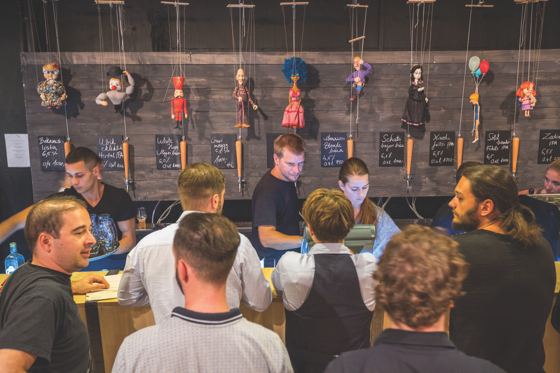While recent buzz in hotel food and beverage circles has centered on the celebrity and developing restaurants with chefs who have gained national renown through televisions shows and awards, today’s pioneers are casting a narrower net and honing in on what might seem a much more unlikely crowd: the locals.
“We want to build for the locals first and the rest will come,” said Brad Nelson, vice president for food and beverage, and global corporate chef for Marriott International. “That’s a big shift – addressing the places where people want to be. As a traveler you are looking for the place where the locals are so you can experience your destination.”
Patrick Goddard, president of Trust Hospitality, Miami, Florida, said that the way he and his team approach restaurant branding today is very much the same way they develop concepts for their independent boutique hotels. “We do an outside study where we look at demographics, psychographics and the local population,” he says. “…We realize that if we don’t design a concept that works within the community we’re not going to succeed. We want the community to feel like they own the hotel and the restaurant. That is central to our philosophy on hotels and dining experiences.”
And while food across the board is getting more refined, hotel restaurants are generally becoming more relaxed, catering not just to that key demographic, millennials, but also to an older crowd. “The way I look at restaurants is older people want to go where younger people are hanging out,” said Guy Rigby, Four Seasons Hotels and Resorts’ vice president, food and beverage, Americas. “Until they get into their 70s, they want to hang out with younger people. They want to feel the vibe. So I’m building restaurants for the 25- to 50-year-old demographic.”
That means restaurants also have to be approachable, Goddard added. “We want them to be good enough for a special occasion, but not so fancy that I won’t go there two or three times a week to have a steak sandwich at the bar,” he said.

While local, relaxed and refined are among the latest buzzwords in hospitality, Marriott’s Nelson said there is no magic bullet that makes a venue cool. So to find innovative new concepts for its hotels around the world, Marriott launched a project called Canvas to “embrace and uncover and provide creative freedom to entrepreneurs around the world in food and beverage,” Nelson said.
One of that project’s very new and “hopefully very successful benchmarks” is the Marionett Craft Beer House at the Budapest Marriott Hotel, which draws on the puppets and puppeteers that are huge slice of central Eastern European culture.
“We actually kind of discovered this little troupe of puppeteers that were really into theater,” Nelson said. “They came up with the idea of doing craft beer in a former storage shed just off the street that was used for 10 years to store boxes. That has been converted on a shoestring budget, with us just giving them the freedom to go and build this.”
Nelson said Marriott “streamlined the red tape and removed the hurdles that we in the industry often throw at” third-party operators.
The result, a bar with beer taps that have puppet strings attached to them. When the tap is pulled, the puppets “move around and do their thing.”
Marionett Craft Beer House has 18 craft beers – all on tap – matched with butcher’s choice Hungarian food. Menu items range from a pastrami sandwich or barbeque ribs to mangalica butt in garlicky mustard soak, deer stew or chicken sausage with thyme in tandoori Indian sauce with pfefferoni hot pepper.
Sixteen taps are the permanent selection of local Hungarian small-batch brews, while the other two have an oft-changing offer of import small-batch craft beers from Berlin, London, Prague and other beer capitals of the world.
“It’s really a phenomenal example of how you provide the framework, provide the structure and some of the broader
guidance that amazing ideas come to,” Nelson said.
While this is just one idea, the Canvas program has 14 projects “with a lot more to come,” according to Nelson. Another project on tap, Nelson says, is a brick oven pizza restaurant in Baltimore with young woman who grew up in a bakery and then started a pizza trailer with a wood burning oven.
“It’s really kind of a change in F&B mentality, to be less restrictive and to try new things – and be OK if they don’t work,” Nelson said. “We’ve opened 13, closed three and re-concepted two.”
Click here to find more examples of great local concepts, ranging from beer or tequila driven to old-school and farm-to-table, from HOTELS December edition.
